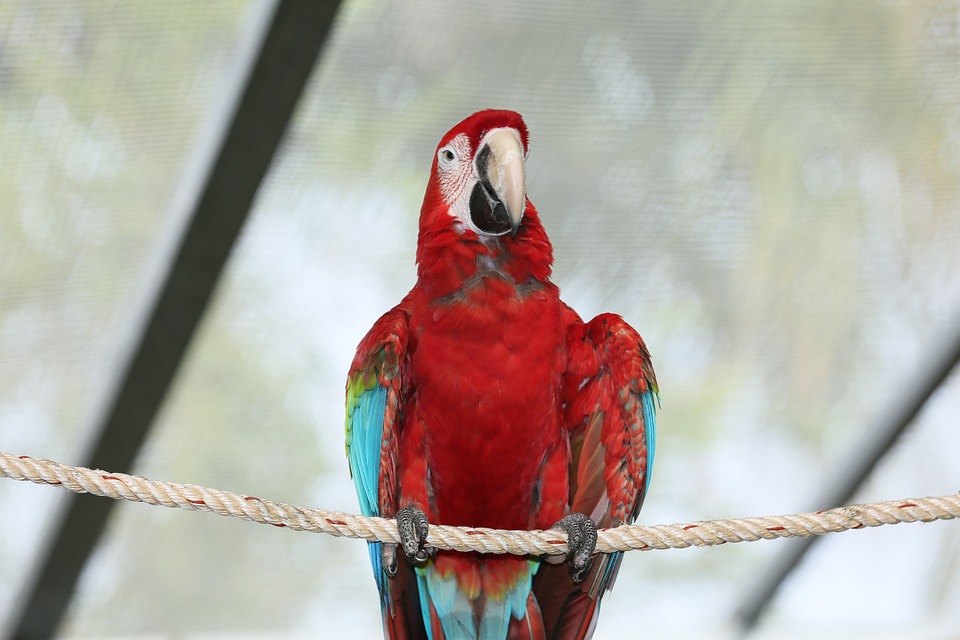Parrots are highly intelligent and social creatures that can be taught to understand and respond to hand signals or visual cues. By training your parrot to recognize and act upon these cues, you can establish a deeper level of communication and strengthen the bond between you and your feathered friend. In this article, we will explore effective techniques to encourage parrots to respond to hand signals or visual cues, along with some frequently asked questions regarding parrot training.
Why Train Parrots to Respond to Hand Signals or Visual Cues?
Parrots are natural mimics and have the ability to learn complex behaviors when provided with proper training and reinforcement. Teaching them to respond to hand signals or visual cues offers numerous benefits, including:
1. Enhanced Communication: Hand signals or visual cues provide a non-verbal way to communicate with your parrot, transcending language barriers.
2. Enriched Bonding: Engaging in training sessions with your parrot strengthens the bond and trust between both of you, leading to a more fulfilling companionship.
3. Mental Stimulation: Training exercises challenge your parrot’s cognitive abilities, keeping them mentally stimulated and preventing boredom.
4. Demonstrable Skills: Teaching your parrot tricks or commands can be a source of pride and enjoyment for both you and your feathered companion.
Training Techniques to Encourage Parrots’ Response to Hand Signals or Visual Cues
1. Start with Basic Commands: Begin training your parrot by introducing simple commands such as “step up” or “turn around.” Use consistent hand signals or visual cues alongside the verbal command to reinforce understanding.
2. Positive Reinforcement: Reward your parrot with treats, praise, or their favorite toy whenever they respond correctly to a hand signal or visual cue. This positive reinforcement encourages them to repeat the desired behavior.
3. Consistency is Key: Use the same hand signal or visual cue every time you want your parrot to respond to a specific command. Consistency helps them associate the cue with the desired action.
4. Gradual Progression: Once your parrot masters basic commands, progressively introduce more complex cues. This gradual progression helps them build confidence and continue learning.
5. Short and Frequent Training Sessions: Parrots have short attention spans, so keep training sessions brief, around 10-15 minutes. Regular, frequent sessions are more effective than infrequent lengthy ones.
6. Patience and Persistence: Parrot training requires patience and persistence. Be understanding and avoid getting frustrated. Remember, each parrot learns at its own pace.
FAQs about Parrot Training
Q: How long does it take to train a parrot to respond to hand signals or visual cues?
A: The training duration varies depending on the individual parrot’s intelligence, age, and prior training experience. It can take anywhere from a few weeks to several months of consistent training.
Q: Can any parrot species be trained to respond to hand signals or visual cues?
A: Yes, most parrot species are capable of learning and responding to hand signals or visual cues. However, some species may be more inclined to mimic behaviors than others. Bonded parrots tend to be more receptive to training.
Q: Can I train an older parrot, or is it better to start when they are young?
A: Parrots of any age can be trained, but starting when they are young often yields better results. Younger parrots are generally more curious and eager to learn. However, older parrots can still learn new skills with patience and proper training techniques.
Q: How do I prevent my parrot from becoming dependent solely on hand signals or visual cues?
A: It is important to continue reinforcing verbal commands alongside the hand signals or visual cues. This ensures that your parrot understands and responds to both forms of communication, reducing dependency on only one.
In Conclusion
Training your parrot to respond to hand signals or visual cues can revolutionize your communication with these intelligent birds. With consistent training, positive reinforcement, and patience, you can establish a strong bond and teach your parrot an array of impressive tricks and commands. Remember to tailor your training approach to suit your parrot’s individual needs and personality, and enjoy the journey of unlocking effective communication with your feathered friend.









